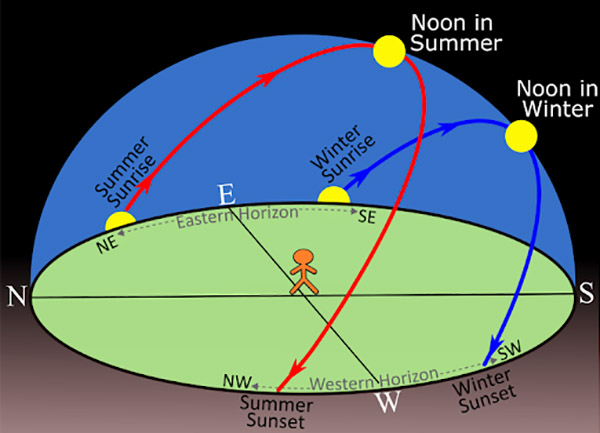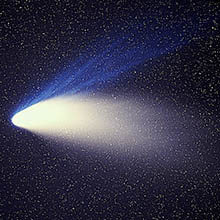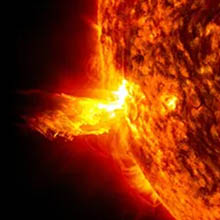Congratulations! You got them all right!

Do you remember which motion of Earth makes a day (24 hours) happen? And which motion of Earth makes a year (365 days) happen?
Click (or touch) anywhere to go back and review or screen capture your work.

 #2. WHAT is a DAY? WHAT is a YEAR?
#2. WHAT is a DAY? WHAT is a YEAR?
Earth spins one time around to make one day. Each time you have a birthday you have completed one more trip (orbit) around the Sun.

Imagine that you are the orange person in the center. The diagram shows the Sun’s path at two different times of year in the Northern Hemisphere. Trace the two paths with your fingers. Notice that in summer (red line), the Sun rises north of east (NE) and sets north of west (NW). And in winter (blue line) the Sun rises south of east (SE) and sets south of west (SW).
Image credit: PUNCH Outreach Team
Drag-and-drop fill-in-the-blanks
FITB #2. Challenge Level: Medium. Word count: 273.
# Blanks: 17. Prerequisites: #1 (Where is
the Sun?).
- DRAG & DROP the words into the spaces in the paragraph below to FILL-IN-THE-BLANKS. NOTE: The word will only drop successfully when the cursor tip (or your fingertip on mobile devices) is within the light-colored box above the blank which will turn yellow when the word is properly positioned.
- TO UNDO YOUR CHOICE click on the blue circle next to the dropped word.
Spring
southeast
lowest
higher
fewer
calendar
sunrise
rotating
day-night cycle
western
year
horizon
12
24 hours
seasons
orbit
stars
Each day, the Sun appears to rise on the eastern horizon and set on the
horizon because Earth is spinning, or
,
toward the east. Our planet takes
to complete one full rotation. Because Earth keeps rotating after sunset, the distant stars appear to rise and set as the Sun did during
the day. A new day begins with another
,
and the sky once again becomes too bright to see the other
.
This cycle of daytime and nighttime is called the
.
How many times have you traveled around the Sun in your life so far? It takes one
(or 365 days) for Earth to go around, or
,
the Sun one time. When you are 12 years old you have orbited the Sun
times, moving through the seasons of
,
Summer, Fall, and Winter each year.
In summertime, the Sun rises in the northeast (NE), and its path is highest in the sky. This causes more hours of daylight and
temperatures. In wintertime, the Sun rises in the
(SE) and its path is
in the sky. This causes
hours of daylight and lower temperatures. So the Sun rises at different positions on the
depending on the time of year.
Our ancestors used observations of the changing sunrise position to keep track of the seasons. We can still use such
a “horizon
”
today!
Knowledge of the 24-hour day-night cycle and the yearly cycle of the
has always been and will always be important to all cultures for growing food and learning how to live well on our world.
Check Your Answers
More Fill-In-the-Blank games
Please contact PUNCH Outreach with questions, ideas, or other comments about this product.










